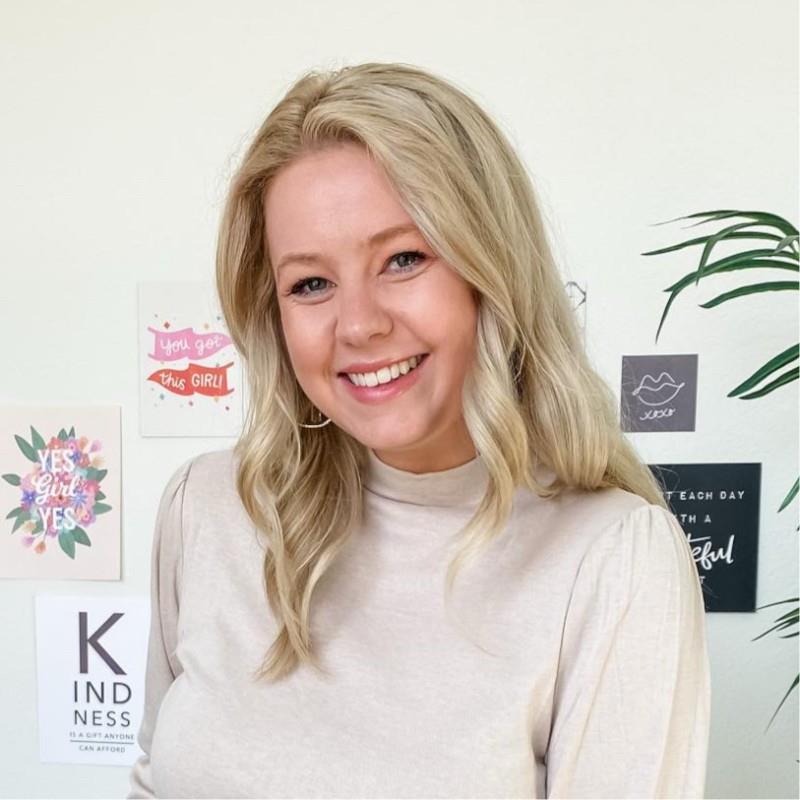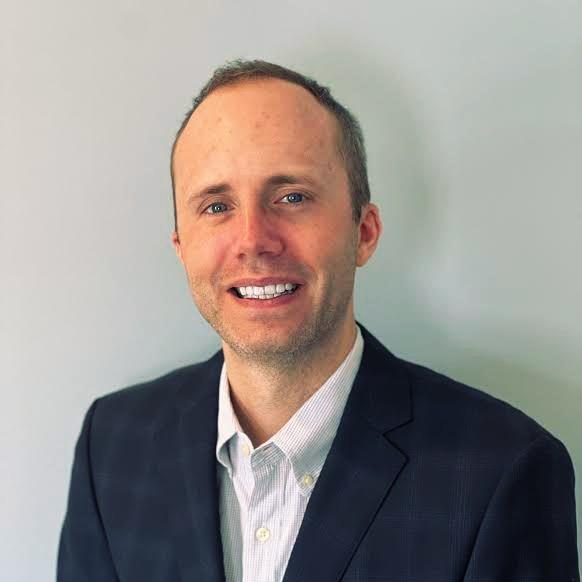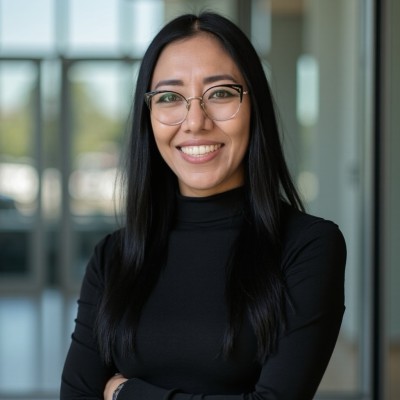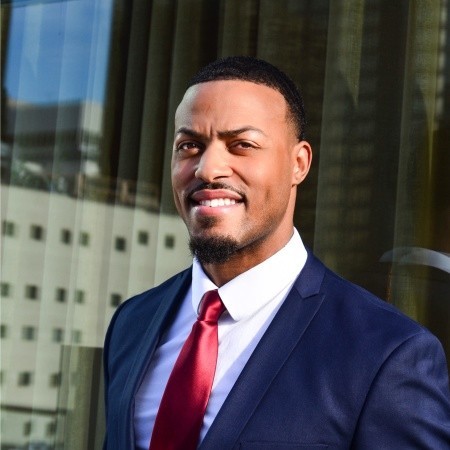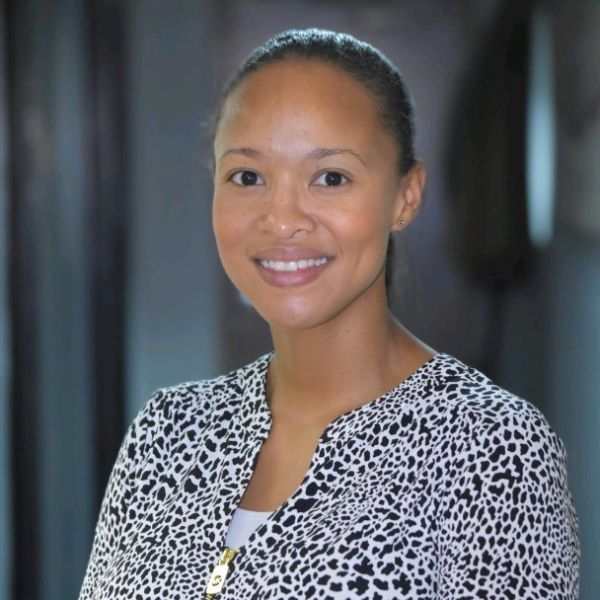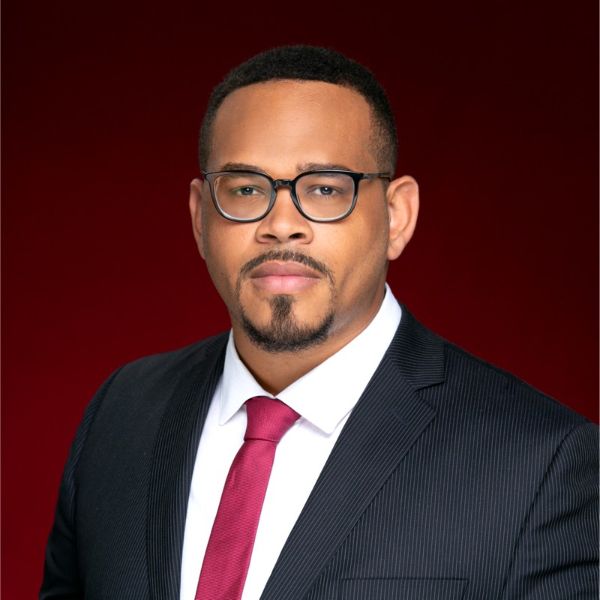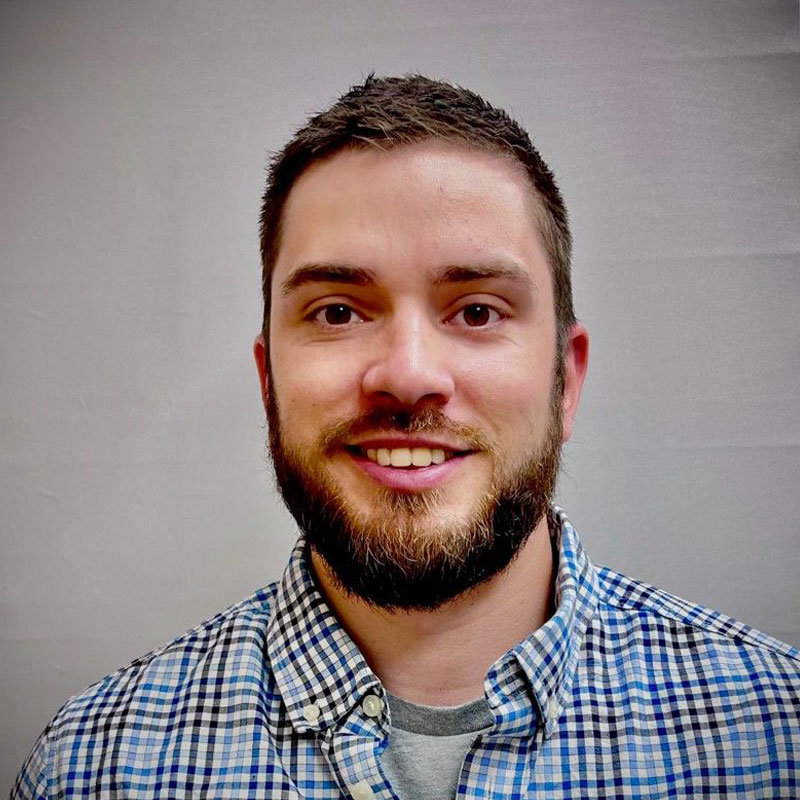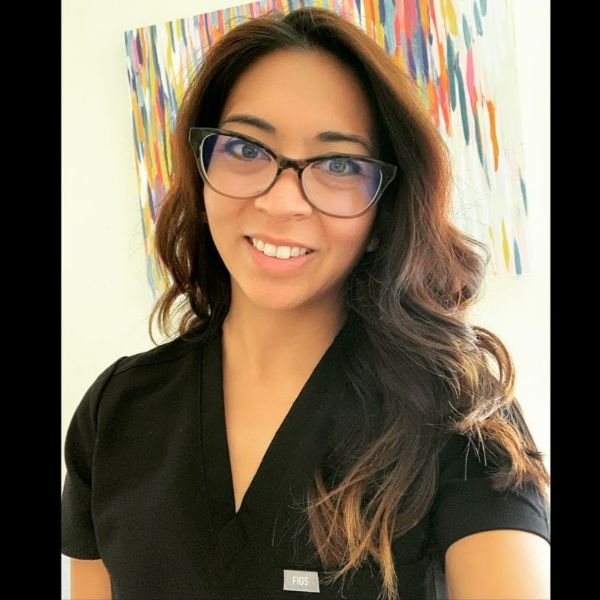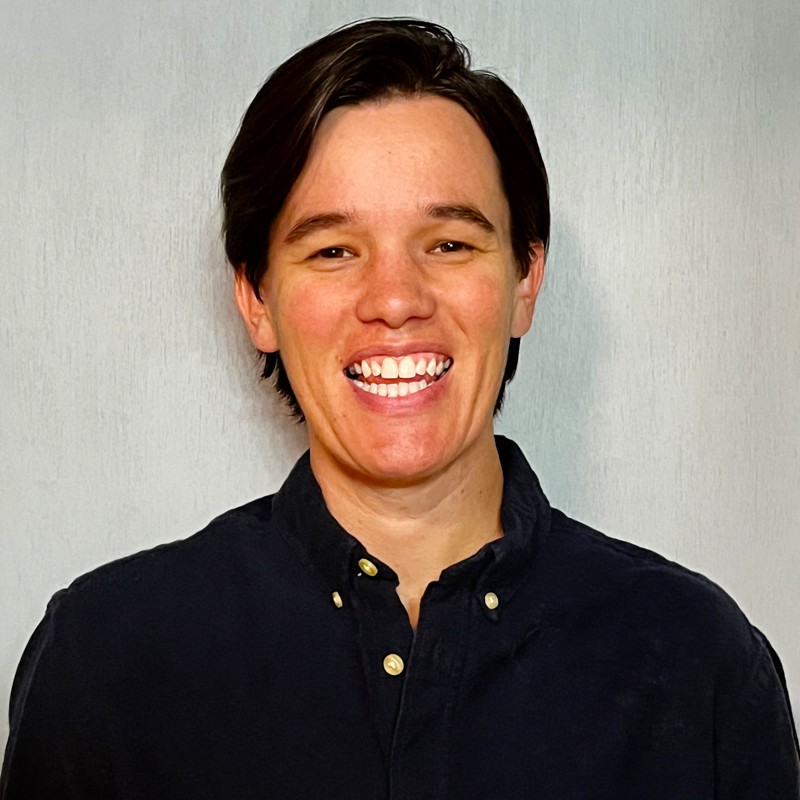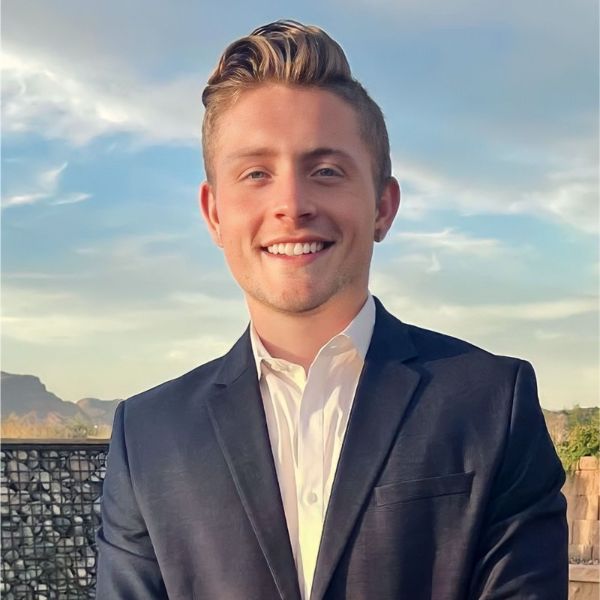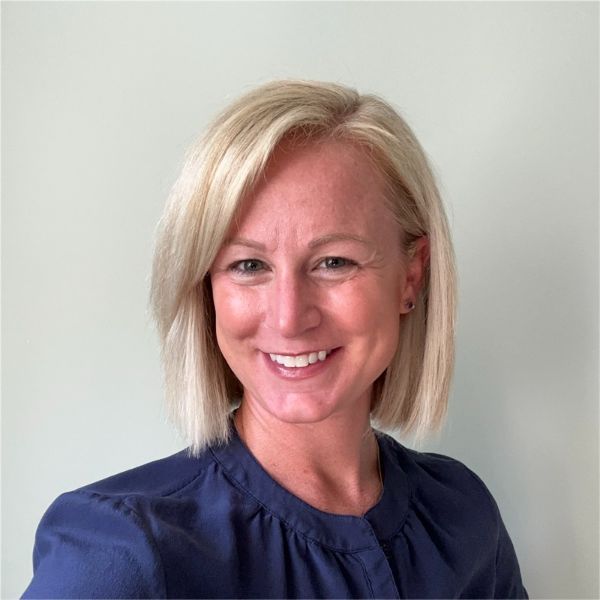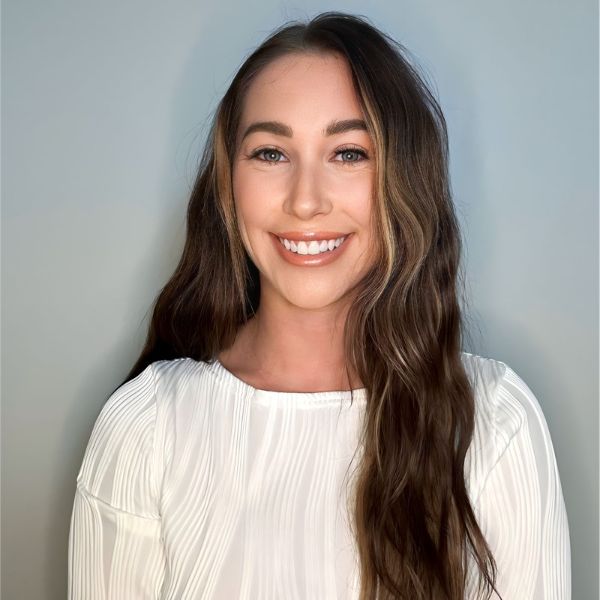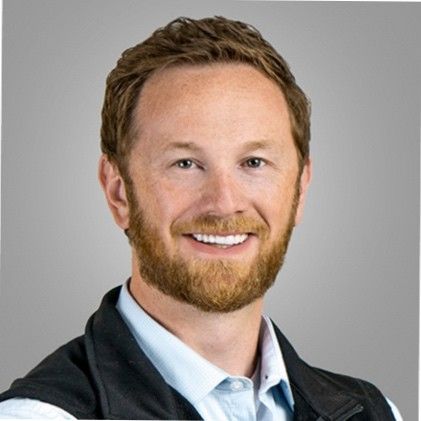
Medical technology is getting so advanced that medical professionals can perform surgeries hundreds of kilometers away from their patients. The majority of this cutting-edge technology is still in the works and not ready for use right now, but it’s being developed. Christian Pusateri is a Business Development Manager at ClaroNav who specializes in Medtech. Joining Samuel Gbadebo, Christian talks about the up-and-coming medical technologies in oral surgery and why he decided to pursue such a specialized field in the pharmaceutical industry. Also, learn how the improvement in visualization technology will help doctors in the future.
—
Watch the episode here
Listen to the podcast here
Advancements In Medical Technology With Christian Pusateri
We have with us, Christian Pusateri. He comes from the MedTech space, more specifically software sales. I get a lot of questions about this space. A lot of people in healthcare sales are interested in transitioning to the software side of healthcare sales. What Christian does is really interesting stuff. He works for a company called ClaroNav and there are surgical navigation companies. He’s responsible for the software that surgeons use to navigate their way around the body using different devices in surgery. A lot of you might not be familiar with the space, so this is definitely going to be an episode that you’re going to love and learn from, and for those of you that are, you might not be familiar with Christian and specifically what his company does. As always, thank you for reading the blog. I hope you enjoy this episode.
—
Christian, how are we doing?
Sam, how are you?
Fantastic. No complaints. Making it happen another day in 2021. Everyone, we have with us, Christian Pusateri. Before I say any more, I want you to go ahead and tell everybody who you are and what it is that you do?
I’ve been in medical technology for many years. I work for a company that creates manufacturers’ visualization and navigation for ENT, CMF, MFS, or maxillofacial, different disciplines in surgery. That basically is, software, algorithm software, camera tracking are the two core components but we’re using the operating room and private practice all over the world. That company is called ClaroNav.
[bctt tweet=”Don’t be motivated by the money. Be motivated because you want to learn.” username=””]
There’s something off right off the bat. When you say MedTech, some people don’t quite know what that means. Does that mean medical device? Does that mean software sales in healthcare? Go ahead and describe for us, what exactly does MedTech mean and where you fit in?
MedTech is a broader term and I do use it on purpose. Some of these terms are interchangeable, but the medical device is very specific. It’s devices that are used in surgery typically. You could say that it’s a MedTech company, but when I say my career has been spread across technology, because it’s the gamut of not hardware, also software, not surgical devices, but practice management. To me, that’s all under the umbrella of medical technology.
In software sales, who’s your call point? Who are you selling to and who makes the decision on what’s utilized by whatever the account is?
In the beginning years ago, I was working for a big Fortune 300, and they had a practice management software and they had an imaging software. That was a very specific call point. It was private practice. My particular area was oral maxillofacial surgery, I was calling on private practice, dentists, periodontists, oral surgeons, and then some hospitals. Now our software is not management-based at all. It’s very specific, imaging visualization software, proprietary, and it only comes with our hardware product which is cart-based, basically camera, laptop and setup. There are both ends of the pie and there’s a lot to talk about in both those areas.
We’ll get into it because I want everyone to hear how your day rolls out and make their own comparison on what they understand about pharmaceutical sales, medical device sales and other sales within healthcare. Before we get into that and what your day looks like, let’s talk about how did you even get into this space. Take me back to college. What was your major and where were you planning to go?
I was an English major. I had a pivotal moment in college in which I broke my neck in a diving accident at a party 4th of July, with no drinking involved. I can do enough damage sober. I do off appear into shallow water and I had a C4, C5 fracture. I was instantly not paralyzed but stuck. I was Medevac’s choppered to Baltimore Shock Trauma, which I was lucky, it was one of the best Shock Trauma Centers in the country. They tried traction for 4.5 hours. They gave me a pill and they said, “Christian, this is going to keep you awake but you’re not going to remember anything after this.”

I didn’t even know that the matrix thing was real but it was or rather that’s more like the men in black camera thing. I literally remember them saying that and nothing else. They try the traction for five hours and they ended up doing a tracheotomy, they did an anterior, they access my neck from both ways, I got the apparatus scrolling back my neck. What they had told me at the time I became close with the neurosurgeon that put me back together and he was like, “The interesting thing about your break, it was tricky. If you had done this ten years ago, your chances of walking again would have been significantly double-digit reduced. Medical technology is advancing so quickly that we were able to put you back together.”
It’s fully functioning. This happened many years ago. Ever since I go snowboarding, I go wakeboarding, I do stuff with some high-impact, knock on wood, but it came back full. That stuck with me and that was my defining moment. When I got out of college, I was looking for that in and it took me nine months. Finally, after asking around and interviewing with everyone on this on and interview with Stryker and Smith & Nephew, I finally got an offer like a foot in the door and then from there, I kept following my interests.
What was the rehab like on that?
Two months of basically sitting on a couch. They said 3 but by 2, I was so out of my mind bored. I was like rehabbing myself. There wasn’t a rehab protocol, it was just, “Don’t move. We don’t want you ascending stairs.” It’s because if I fell again and we broke it, it would have been a mess. It was two months to basically think about what I had done but also, to thank my lucky stars that I was still around and ask myself, “I was really lucky. Is there a way I can pay this forward, and am I interested in the science and the technology that fixed me?” It happened that I was.
After two months, you were walking again like that?
I was walking out of the hospital again. I never was paralyzed. I had tingling. My surgeon told me I was about two-thirds and a millimeter away from severing my spinal cord. If that had happened, I would be sitting in a wheelchair and I’m not talking to you but that didn’t happen luckily.
You couldn’t have said it better. That is a life-defining moment. You graduate and this experience happened and you were looking for an end. What did you find?
The first job that came my way was selling dental implants and biologics to general practitioners, oral surgeons, prosthodontics, periodontics and it was a great foot in the door gig. It was a smaller company, an Asian company. They wanted college grads because the pay wasn’t nearly as good as it was in other parts of medical and pharma. They are grinding us. Every day we had to be in the home office at 8:00 AM. We had meetings every day which was an hour away from where I was living, so you can go there from 8:00, meetings until that 10:30, 11:00, and then you’re supposed to go out in the field, you sell until 5:00, and then you have to send in a report at the end of the day about what you did to your branch manager. Now obviously, that’s not the kind of job you’re going to take. That’s a good college foot-in-door job when you’re learning and you’re cutting your teeth and it was great for that.
Was that Henry Schein?
That was a Korean company.
What was the move? Why did you leave that place and what were you thinking?
One of the things I love about this career is if you want to travel and you want to see other geographies and other cities, you can do it in this career. Once you get a skillset, it’s so technical and if you can really learn to speak the language, you’ve got value like being a nurse. I had always wanted to experience the West Coast. I was born and raised in Mid-Atlantic. I worked in England a little bit, but I was one of them on the West Coast. I put it out there and started interviewing again. Took me about eight months, got a job with Henry Schein. I went from working at a pretty small company to a $10 billion company. That was an interesting change.
What was your experience at Henry Schein? What was the difference between where you’ve just been coming from?
When you get to those big companies, you’re a number, not good or bad. It’s what it is. They’re managing thousands of employees. It’s much more black and white. You’ve got to quota, you got to go out and you got to hit. I liked the breadth of products that I had. I loved the brand name. I never walked into an office. I never went to a hospital or private practice where people didn’t know the company I was working for. That was nice. We had some branded products in great market penetration, so we could go into almost any account and they were already buying something. You’re trying to get them to buy a little more.
What prompted the move from Henry Schein?
The thrust for me was following what I’m interested in and specialization. It’s served me well. I certainly know guys that have made more money doing the constant great. If you’re money motivated, you can certainly follow that. For me, I want to be more specialized. I want to get to the point where the things that I know that I’m doing. There are six people in the country that can speak to that. That’s been the thrust of my career. I went to a company. It was software and imaging. The imaging was hot. I wanted to ride that wave and that was where most of my interests lay, so I went to a company called ACTEON.
You saw the opportunity. You want to ride that wave, you say but when you got into it, you started to love it?
Yeah.
Talk a little bit about what was Superhuman Inc.
That was my side hustle. Shout out to Gary Vee. I subscribed. I was lucky California’s early adopter market. If you’re selling anything in California, you’re going to start bumping elbows with some of the brightest minds, not in the country, on the planet and I was. I was working with doctors that were internationally renowned. These guys were talking to podiums all over the planet. They were getting paid $25,000 to speak at an event. For example, I was at USTC Telemedicine down in San Diego, which is right outside La Jolla. There’s this little strip on the way to California. It’s got the most Nobel Laureate per square mile of anywhere on the planet. A lot of them work out of USTC telemedicine. This was several years ago. I was there on business.
I was working with a CMF on the Fest department but I happened to be in the same hall it’s where they had this da Vinci robot. It had the ability to remote into surgery. This was a generator port and there was a receive report in Africa. They were working on being able to have a doctor slide his hands into this little surgery port and the way that he moved his hands would be the way they have robotic hands moved 7,000 miles away. This was bananas. The funny thing was I started asking questions and there was an attending nurse or something. I was asking questions about it. He was answering them reserved like, “Who are you?” I finally got him to open up and he’s like, “The funny thing about this is it’s got a four-second lag time. That’s our biggest problem.”
We had a laugh like, “If I’m on the operating table, I don’t want that.” I was fascinated that this thing existed and getting exposed to that kind of technology. For me, it was the most fascinating thing that I was doing. I wanted to see if I could build some sort of company creating general awareness around these products that are on the cutting edge, that you don’t hear about mainstream news. You’re not even going to necessarily hear about this stuff on WIRED or the TechCrunch. I was getting insights and stuff. I wanted to find a way to share that with people.
This was the platform.
Just to go off, for anybody who’s thinking about starting a side hustle, that started off pretty humbly. I took $15,000 $20,000. I had a friend of a friend who was in the Hollywood scene. He was an editor and producer. I was like, “How much would it take to make like a teaser and to put together a show, a docu-series where I go around interviewing people about the latest stuff.” We did this. We filmed this back in 2017, 2018. We edit it for a few months, we went around Hollywood, shopping into different production studios. I did the whole thing like selling everything. It was in waves, we didn’t get to take off but we keep grinding on it. I got Aubrey de Grey to come on my podcast. If you’re familiar, he’s considered the father of anti-aging. He’s one of the most well-respected, most desired speakers on the planet. He’s got the SENS Foundation, which does all the research on that. He came on the show and gave me an hour of his time and talked. That’s where it went.
What it does is it creates media for any thought leaders to use around selling of devices and whatever they’re into?
It’s media trying to get the brightest minds in tech mainly that they’re on the cutting edge of, “What we’re inventing or creating,” to talk about what they’re doing to come at it. These guys are working 70 hours a week. They’re working a lot of times in the basement floor of Harvard or USC somewhere. They don’t come up for air much. Aubrey de Grey, I can’t say that about him at all. He does speak but these guys are busy and I wanted to give them another platform from basically, a super fan that would get them to talk about it.
Now we get here with ClaroNav. Talk to us about what got you to that role and give us a little bit more detail about what you’re doing in that space.
This was a chance to basically blend in both those worlds. ClaroNav is creating a visualization technology for surgeons. It’s not new technology. It was basically meant for military use more than 30 years ago. The first application was by My CEO’s, they’re engineers. They did it in the early ‘90s. It was the newest thing that exists in my industry, where I butter my bread and where I know what I’m talking about. It’s combined superhumans because it’s cutting edge. It’s practical because I can go work at this company, I have a lot to offer. At that point, I had a dozen years in the space, so I knew a lot of the distribution networks, the key opinion leaders, the people to talk to, the channels. It’s a way to blend both, unlike Henry Schein, with Stryker or Pfizer, where you walk in and everyone knows what you and your product portfolio. I’m explaining the technology, the company, and I’m explaining about it, nobody knows this. We’re a few years ahead of the curve and we’re looking only for early adopters.
Talk to it then. What does your day look like? Walk us through a day in this space and from what you decide to do before you leave the house to the customer and you’re going to see right to the appointments.
It’s a blend between macro and micro in a big way. On an average day, when I’m working with my distributors who I had to sign up, you have a relationship where you’re making a product and you don’t have access to the market, but you go through a distributor, who’s got great access to the market. These are reps that have called points. They’re all trying to see about a hundred accounts a month and you’re trying to get on their screen, get on their radar, get them excited, incentivize them, teach them about the product. You’re hoping they bring you leads. Those days are grindy. You’re calling all these equipment reps and I’m doing that nationwide for multiple distributors.
On the other days when I started, I’m having distributors, there are days I’m waking up and I’m like, “I got to find a way to get in front of C-Suite. How do I find the equipment director of a hundred million-dollars or close to half a billion-dollar company? How do I get in touch with these guys?” There’s a lot of methods we can talk about there but I’ve got to get in there. Once you get them interested, you got to pitch, calling up key opinion leaders that I know have followings on social media and that speak around the world, around the country. I’m trying to get on their radar and have them give me time. We do a Zoom call and I’ll say, “This is who I am. This is what I’m selling. This is the applications in your practice or for your patients.” I’m trying to sell them. It’s a little bit of B2B, a little bit of B2C but you have to keep the needle moving in terms of bringing in direct sales, from the market and then also building this infrastructure around it.
How long does a typical sales cycle for one of your navigation systems?
It’s 3 to 6 months.
From the introduction to the actual sale for 3 to 6 months, that’s not too crazy. You’ve had this role for a couple of years. You’re saying that the majority of your leads come from equipment moving to reps now?
Correct.
What’s the incentive for them?
It’s one of the products in their product portfolio. They get paid on it like they paid for selling anything else. They get a commission.
ClaroNav contracted with other device companies or you guys all work together and they’re incentivized to work with you and do what they can to bring you leads?
Correct. The model is almost always in medical, either direct to market or distribution. Most companies will do both in the beginning. We do both. I still can sell direct but once you start bringing on distributors, they don’t like you to sell direct because they don’t want you to undercut them because your price is always lower than their price. Wherever I open up a distributor, I don’t sell directly in that market anymore. It’s like a courtesy. Sometimes officers of your company won’t like that because they want as many sales as possible. It’s on me to figure out and play politics a little bit.
What’s the competition like in this space?

There are two of us that have any share. There are 6 or 7 companies globally that are into this technology developing it but only two of us have any real share.
Talk a little bit about that. That sounds beautiful but that as good as it sounds, does that make things a bit challenging?
You mean there’s no competition?
Right.
Yeah, but you’re talking about it’s great when you’re selling bone screws and tax in a market that has to use those on every single facial surgery, thoracic and its standard of care. It’s great. We’re not standard of care yet. There are only mainly two of us because we’re trying to get that standard care. We think this is the next iteration of visualization and surgery.
Just so the listeners have a clear understanding of what this is, how is this cutting-edge technology benefiting the provider? Explain to us why they want to be a part of it.
In the arc of all surgeries, the outcomes have to get more precise. Surgical times need to be reduced as much as they possibly can. Liability to the provider has got to be reduced as much as we can. That has to be the arc of all medical technology otherwise, we’re inventing things for the sake of many things, and we’re adding to the overall cost of healthcare to people without increasing efficacy and accuracy. 3D printing came into my space a long time ago because you can 3D print guides for surgery, which makes you more accurate. Nowadays, Stryker got a partnership with 3D systems for a lot of oral surgery trauma, where they work hand in hand. Stryker has all the plates, the metal, and all the hardware, and then 3D systems will take the scan of the patient and they’ll 3D print a replica both for planning, and then also for guiding screws and drills so that everything goes in the proper place. We are the next level of 3D printed guidance because what we’re offering is real-time navigation.
With the providers, the doctors looking at, whether it’s a spine surgeon or an ENT or a normal surgeon, he’s looking at a screen. He’s doing heads-up surgeries not looking at this patient. On that screen is a DICOM of the patient, which is a 3D image, then in real-time, it’s got an avatar of the handpiece, of the screw, of the drill. You’re seeing that on the screen overlaid on the patient’s DICOM file. That DICOM file’s showing their bone, it’s showing where their nerves are, where the sinus is, all the sensitive anatomy. They get to see in real-time like, “Am I close to that nerve? Am I too facial?” 3D printed guides don’t offer that real-time navigation.
This sounds like it makes too much sense to not do. Where’s the resistance? Why isn’t this the standard of care?
We’re tackling the same challenges that every new product has to tackle coming to market. We have a ton of research. There are clinical sites from Academia, third-party, private companies, we’ve got a ton of research, so that’s all they’re saying that we’re more accurate but then there’s going to be a time delay on getting that to market. We’ve been in the market with this particular product for several years, and we still need doctors to be able to use this and report back our research and say, “This is working,” which they are but it takes time.
When you’re talking about hospitals, I can introduce this to a hospital. I was doing demos, in greater New York to big-name hospitals in December, January and they all said, “We want one.” It’s now almost June and we’re about to get the PO because they have a whole purchasing department. You got to get 3 or 4 to 5 signatures. If you’re talking about privacy practices and ambulatory things like that, outpatient places, they still have a smaller person department but you’ve got to get the owner, the principal to sign off. You’ve got to make sure that they have seen a couple of presentations. There’s a little bit of delay in getting it to be standard of care.
You’re responsible for every call point that you get a purchase order, eventually to complete it, to get everything done?
In the US right now, yes.
What are the resources like with the company? For someone that wants a role or was interested in something like this, how does it look as far as support from the organization? What do they expect of you by yourself and what do they jump in to definitely help you with, if anything?
Everybody needs to be open to wearing multiple hats. If you get a straight-up sales job, what matters to that company is that you hit your quota every quarter. That’s it. With this company, I’ve had to put on a marketing hat, operations hat, setting up a distribution network, that’s not sales, that’s business operations, business development, anything that I’m skilled enough in to offer, I’ve got to offer it up. You’ve got to be willing to do that. It’s the first time I could say I’m invested in the company. That might sound selfish but up until this point, I was learning. I wanted to learn, and I was trading my time to a company and in return, I was learning. When I left, no harm, no foul, no hard feelings but I’m moving on. This company, I want to see succeed because I believe in the product. I think that, whether or not I’m there, they got to do well. That encourages me to do more than whatever might be asked and go above and beyond.
It probably goes for a safe change, the nature of how you treat your job. The fact that you’re so invested here, you’re operating on a completely different level.
It’s easy to get complacent too. With those big companies, they can give you a nice little comp package. Everyone knows you, sometimes you can call it in and you can hit your quota. I’ve gotten that rut over the years. Luckily enough, when I get bored and I get anxious, I start sabotaging myself. It works out well for me.
Chris, take us back to how are you making this all happen? You have an organization that you run yourself with Superhumans, you’re part of this great company, ClaroNav on the cutting edge. You’re clearly making things happen in your current role. What keeps you standard? How do you make all the things happen?
What’s that saying, “If you want something done, give it to a busy person.” If my heart wasn’t in this stuff, there would not be enough time. I’m doing more. I accomplish way more now than I accomplished in other roles. When I was at ACTEON, for example, it was a standard medical equipment job. You were expected to grind. I was putting in 60-hour weeks pretty frequently. A lot of travel but I’m doing more, accomplishing and getting more results now, working probably fewer hours but the hours that I’m working more focused because my heart’s in it. My heart’s in the games. There’s something there about paying attention to your gut and following that. Going to this company wasn’t the most comfortable thing. I had a comfortable job before it but I’m sustained and I can handle all this because I love it.
[bctt tweet=”Everybody needs to be open to wearing multiple hats.” username=””]
For people reading, if they’re a med device rep and they’re thinking about this field or if there’s someone that’s been need to be set in the thing about this field, what would you let them know? Who is the most qualified to even go the route you went, when working for a company like ClaroNav? What advice would you give to people that are interested in it?
First of all, if you’re interested in anything, get on LinkedIn and pay for premium, that’s the number one thing. Seriously, that’s how you and I got connected. It works. The best people that I’ve met are all on LinkedIn now. I thank the world for this unique moment in time where you can get in touch with who you need to on that platform. That’s the first thing, get on there and start messaging the people that can answer your questions. The other thing too is I spent the first half of my career telling people in interviews one of my favorite quotes, “An interview is a meeting between two liars.” It’s so true. The interviewer is lying about how good the job of the company is, the interviewee is lying about what they’ve done and how great they are. It’s like if you’re making it or not, you’re straight-up lying, you’re embellishing.
One of the things that I always said in those interviews for the first half of my career was that “I’m money motivated.” That’s all I want to make the money. That was part of it but it wasn’t all of it. I had a thirst for knowledge in being a specialist. I never said that but when I started following that a little bit more, my career started to get way more exciting and interesting to me. Ask yourself what motivates you and stay in that space for a few months. Get it clear. I spent six years lying to myself saying, “I was all about the money,” but I got the money and I was strung out. I was snappy. I’d get snappy with my friends. I was burning the candle, I wasn’t happier, so I think that self-awareness is a big one.
Who would best fit for the role that you’re doing now? Straight from work, what they’re doing is something like this?
If you’re the kind of person that likes being in the operatory, that’s pretty handy now. It’s critical when you got to cutting-edge technology that’s not standard of care yet when you’ve got whether it’s a device, a new screw, you can have all the research in the world but it’s going to have to work in the operatory. The only way that’s going to happen is if somebody is in that room with that doctor, you’ve got to be okay with things going wrong. I was in a case a few months ago, a doctor was using the system for the first time and he nicked the lingual nerve in the mouth and blood starts going crazy. In that situation, grab the gauze from the nurse. We put it on that attach on the patient, obviously but I’m comfortable in that position and I’m offering confidence, support and guidance to the doctor. That was the doctor’s error, that’s stuff’s going to go wrong. These doctors have to have a good experience with the product. If you’re someone that likes treating patients and being as close as you can without being a doctor, this is a great thing to do.
As far as leadership in these kinds of roles, it sounds like you talk directly to leadership. There are not many people in between direct leadership and your role, is that fair to say?
I’ve got a global VP, incredibly smart, very dynamic, puts up with a lot of my BS, and then basically the CEOs, that’s the line of command. In this position, there’s a hierarchy. You’ve got to have hierarchical structures when you disagree at the end of the day, we can disagree but if he makes a decision, I got to follow it. Hierarchy fades a little bit too, as you get into these smaller cutting-edge companies. The hierarchy was big when I was at a big company. My boss’s boss, good luck getting that guy even on the phone, even to take my email, there’s just pecking order.
Now you guys are close to that family. Is this something you see for your future getting into leadership within this space or are your eyes wide open, “We’ll see where my current focus takes me?”
I’ve got buddies that are about climbing the ladder and they’re about financial security, they make great money and they’re want to climb the ladder. I got my cousin-in-law right now. He’s going back and getting his MBA because he wants to keep going up the ladder and he’s got great comp and security, all of it. I respect that and I admire it. For me, I want to get equity and ownership. I want to go to companies where I’ve got something to offer, they’re willing to give me some equity for it or let me buy equity for it and I believe in them, then we ride this thing until it goes, until we can get acquired or have an IPO, to me that’s fun. That’s the kind of ride that I’m signing up for.

What are the last lines you can leave with the audience? Overarching advice as far as our readership, people that want to get in, people that are in and leading the way, what would you like to share?
You can get in touch with anybody that you need to these days. Get on LinkedIn, email me directly. There’s a great website. Do you use Hunter.io?
No. What’s that?
There’s a website called Hunter.io. Basically, you enter in a company name and it gives you the format of that company’s email address. As long as you know the name of the person you want to get in touch with, you can get their company email address and you can send them a personalized email. It gets you right to that person’s inbox, whether it’s a hiring manager, whether it’s a doctor. At the beginning of most of the roles, in the first 90 days, one of the first things that I’ve always done because I’ve been told to do it is to find your local doctor that’s a champion and watch them in cases.
That’s how reps usually learn best. What they don’t tell you is that a rep is no more qualified than the person that wants to learn. You can do that anyways. If you want to get into a field that you’re not in yet, you can reach out to your local doctor, someone that’s got something that you think that you want to learn about and you can ask to shadow with surgery. They can scrub you up and you can shadow. You got to be quiet and soft to the side. It’s not the most common practice but that’s a little bit of a hack that you could do. It’s all there for you.
Christian, thank you for the time. We look forward to hearing what you’re doing with Superhumans, how you grow in ClaroNav and seeing all your future moves.
Thanks. It’s been a pleasure.
—
That was Christian Pusateri. A dynamic field he’s in and the things he gets an opportunity to do on a daily basis, and the type of service and products that he sells. It’s fascinating stuff with how fast technology moves in this space. It’s a beautiful thing to watch and it’s even more of a beautiful thing to be a part of. If you’re someone out there that’s been reading this episode and you’re thinking to yourself, “I really want to know more about that field. I might want to get into that field, myself.” Don’t hesitate to reach out to us at EvolveYourSuccess.com or you can find me on LinkedIn under Samuel Adeyinka to shoot me a text. One of our client’s specialist will get back to you and line up a conversation so we can talk about how you can be in a career like this. Of course, Christian’s out there, he is on LinkedIn. He’s also available to talk to, so make sure you reach out to him.
If you’re someone that’s looking to get into any space within the Healthcare sales industry or make a transition from pharma to a med device, med device to software sales or med device to biotech, whatever your move is that you want to make, reach out to us. You can find us EvolveYourSuccess.com, select Attain a Healthcare Sales Role and get in contact with us or find us on LinkedIn and send me a text directly. Someone will get back to you and we can line up a conversation and get you into a program that experienced success, getting people into the roles they want to be in.
If you’re a sales professional or you’re a sales leader that has a team and you want to see better performance, maybe you’re in your own career and you want to see some real development, you have things to work on and you’re thinking to yourself, “How can I get to the next step? What do I need to do?” find us. Go to our website and select Improved Sales Performance or reach out directly to us and we will get back to you, get a conversation going and talk to you about how we can help you reach that level of performance. If you’re a sales leader with a team and you think you’re doing the same thing, again, reach out to us. As always, thank you for reading the blog. We do what we can every single week to bring you guests that have fascinating stories, fascinating fields and something to share. Make sure you tune in for another episode.
Important Links:
- ClaroNav
- Aubrey de Grey – SuperHumansInc past episode
- SENS Foundation
- Hunter.io
- Samuel Adeyinka – LinkedIn
- Attain a Healthcare Sales Role
- Improved Sales Performance
About Christian Pusateri
 Christian is passionate about medical technology that makes a real difference in people’s lives.
Christian is passionate about medical technology that makes a real difference in people’s lives.
After a decade of selling and marketing cutting edge medical devices and technology in the mid-Atlantic, Southwestern and New England markets, Christian has landed at ClaroNav to help promote the future standard of care in guided oral surgery.
He serves ClaroNav as the U.S. Eastern Regional Sales and Marketing Manager.
Love the show? Subscribe, rate, review, and share!
Join the Medical Sales Podcast Community today:

